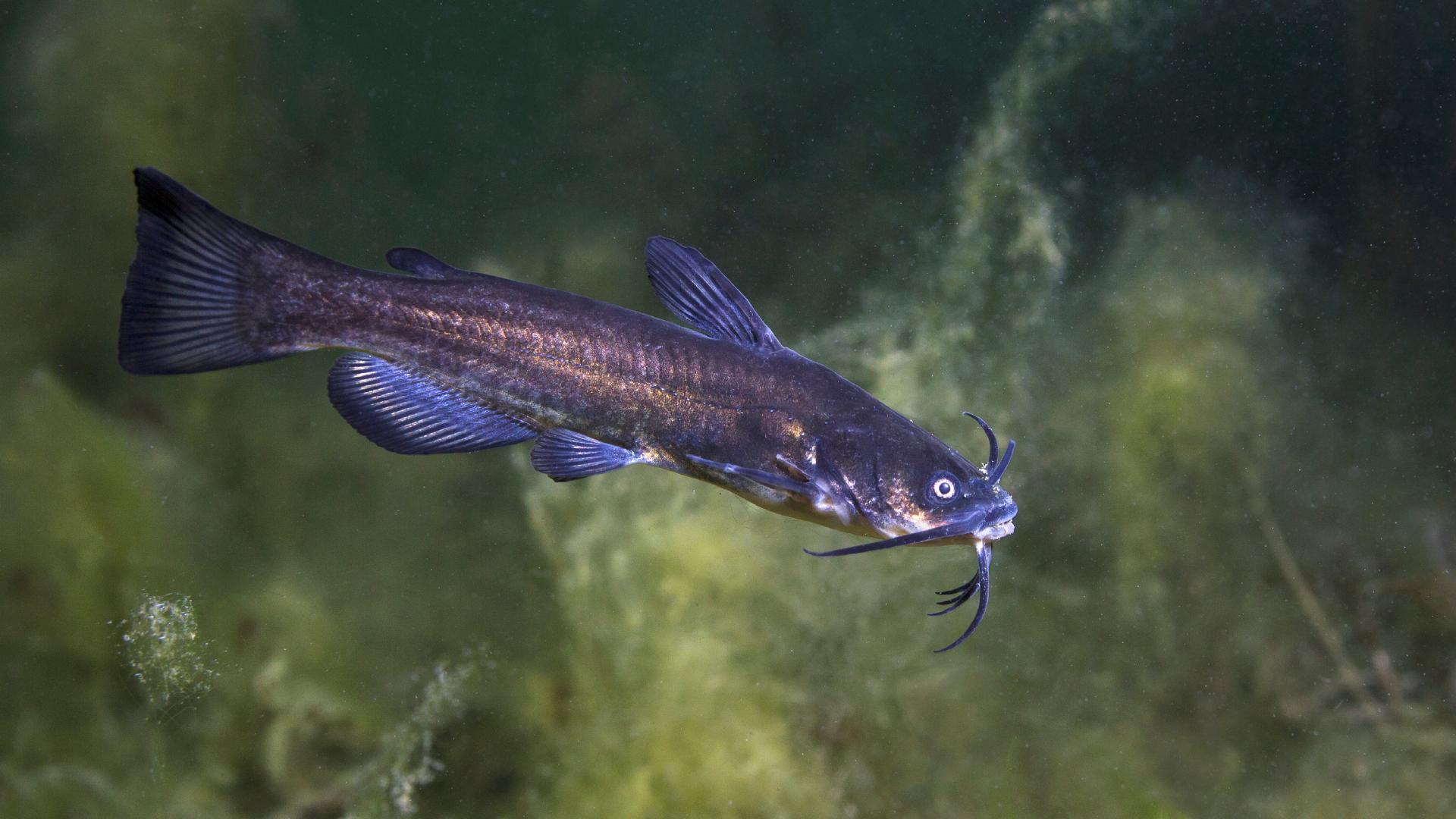Black bullhead catfish population on the rise in Lake Balaton, which is bad news for native fish species
The HUN-REN Balaton Limnological Research Institute (BLKI) studied the feeding habits of three fish species in Lake Balaton: one invasive and two native. The research revealed that while the invasive black bullhead catfish mostly eats different food than its native counterparts, it is an efficient predator, posing a real threat to native fish. This is why black bullhead catfish caught in the lake should not be thrown back, and the capture of fingerlings is encouraged. In the long term, experts hope that the removal of black bullhead catfish spawn clouds will be successful.
The black bullhead catfish (Ameiurus melas) population in Lake Balaton is steadily increasing. While the species was only sporadically present in previous years, by 2022 it accounted for nearly 20% of catches in the coastal region. This is why researchers at the HUN-REN Balaton Limnological Research Institute examined the size- and season-dependent feeding habits of the invasive black bullhead catfish and two native fish species, the perch and the roach.

The research revealed significant differences in the feeding habits of the species, meaning they do not consume exactly the same type of food or in the same quantities, nor do they forage in the same areas. Partly due to this, the researchers have not yet observed a decrease in the number of native fish in Lake Balaton as a result of the presence of black bullhead catfish. "If the population of black bullhead catfish increases in the lake, this situation would likely change dramatically," said István Czeglédi, a scientific researcher at BLKI. However, they are still investigating which species the bullhead catfish may compete with.
The study showed that the black bullhead catfish primarily feeds on macroinvertebrates (i.e. visible, non-vertebrate animals such as snails, mussels, or insect larvae) and fish. Although they consume a significant amount of fish, and the larger they are, the more they eat, their fish consumption does not depend on the season.
Perch also consumes a large amount of fish and aquatic macroinvertebrates, but the distribution of smaller animals in its diet is more balanced compared to the bullhead catfish. Roach, on the other hand, primarily feeds on macroinvertebrates and plants. Contrary to expectations, significant differences in feeding habits were observed among the three species studied. Based on the results, the black bullhead catfish in Lake Balaton has a negative impact on the native fish population primarily through direct predation, while competition for different food sources plays a lesser role.
For years, anglers at Lake Balaton have been encouraged to catch black bullhead catfish. Previously, it was prohibited to catch fish with a landing net, but now it is allowed—and even recommended—to scoop up the clouds of black bullhead catfish fry moving through the waters of harbors. Experts say it's still too early to speak of positive effects, but they see the initiative as promising. However, only anglers are currently permitted to remove these fry, as this activity requires basic species knowledge to avoid mistakenly removing other (native) species.
In July 2022, the black bullhead catfish was added to the European Union's list of invasive species that pose a threat, and strict regulations are in place in Hungary to protect Lake Balaton from them. Beyond advocating against the release of caught fish back into the water and the removal of fry clouds, experts do not recommend other interventions. "We do not consider the introduction of species-specific diseases or invasive predatory fish to be good solutions, as these could have unforeseeable consequences for other species," added István Czeglédi.

